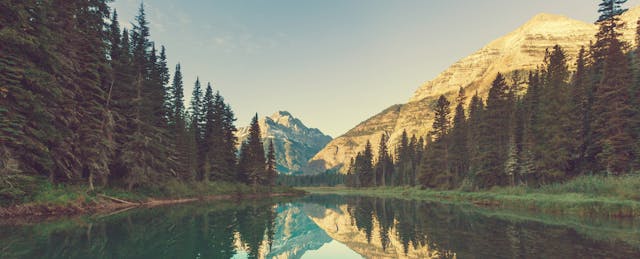Montana is called Big Sky Country for a reason. It’s a state filled with vast open spaces between the mountains, plains, rivers, and ranches. Nearly half the population lives in rural communities, including Dixon where I serve as principal. As a result, there are many challenges to keeping continuity and consistency across students’ educational experiences and to ensuring equity.
Thankfully, our population currently qualifies for school-wide Title 1 resources, Impact Aid, and Title VI: Indian Education funding. Without a strong tax base, these programs are essential to enable our staff to provide the quality education they deserve. These initiatives help us feed into our district vision for instructional planning, professional development, facilities management, and community outreach. But they are not enough.
Beginning my third year as an administrator in this rural reservation district, a clear objective emerged through our various programs, collaborations, and the day-to-day functions of our community campus: all students must move through Dixon School, and beyond, with the skills and mindset to face all challenges and see their goals as steps toward achieving their dreams. In order to do so, we’ve adopted a place-based approach to instruction, both for student learning and, equally important, for professional development.

Why Place-Based?
Dixon is set in a postcard-perfect Montana scene surrounded by mountains, bordered by the Flathead and Jocko Rivers, and checkered with some of the most fertile farmland in the region. Just north of town, toward the National Bison Range, is Old Agency, the original Flathead Reservation Tribal center. Once an active center for the Bureau of Indian Affairs, Dixon Agency is now scarred by dilapidated homes fed by a toxic water system.
Many of our students don’t travel far beyond the boundaries of our district and the majority of staff members commute to the area for work. There is a natural disconnect and a significant need to establish a trusting community within that reality. The one thing we have in common is the fact that we all spend the majority of our time in Dixon.
Place-based instruction allows us to learn more about our region today, the history of the people and their varied perspectives, and to establish a culture of citizenship and community pride to foster growth for future generations.
When cultures come together to learn both with and from each other, there is often an unintended dissonance. Without the shared experiences of being raised within the same traditions and history, too-eager curiosity, bias and even what we think is good manners gets in the way of truly understanding one another. Fear of offending or spreading misconceptions often lead to omissions of content or uncomfortable dialogue. Place-based instructional practices draw on experiencing the land, the stories, and the primary sources that inspire active learning and promotes civic responsibility.

Staff Before Students
Staff before students? This is not a phrase you will hear me utter often. However, when it comes to facilitating the inquiry process required for place-based instruction, context is everything. The complex history we experience when teaching and learning about our region is not unique; similar challenges are faced when teaching and learning about the plantations of Georgia, the internment camps of World War II, and endless other moments in history that impact our human interactions. Educators do not have to be experts in all these events, but we do need the skills to moderate collegial discourse, minimize bias, and develop confidence to engage in the process of learning WITH students.
If your experience was like mine, you likely learned most history through reading and taking notes through lecture. Though this method was successful for many in learning the history itself, did it prepare you for discussion and debate about varied perspectives on history? Did it offer you the relevance required to encourage you to get civically involved in your community? What was the purpose of reading through history in chronological order?
As leaders, we need to support teachers in developing an instructional program that engages all learners in contributing to the world around them. Commit some of your professional development time to identifying, researching, and discussing the land and the people closest to the school. Bring in some regional voices to create shared experiences as a staff. Visit local landmarks together and encourage teacher teams to develop supplemental lessons to enhance current units of study. The local archives offer great lessons on digging deep for text-based evidence when meeting English Language Arts Standards. Learning sticks when skills transfer to action.

My Go-To Tools
From my time as a classroom teacher, to my time as an instructional coach, to my most recent role as an administrator, my favorite resources remain the same. The best part about these sites is that they stay up to date with the dynamic nature of current events as those events often change how we perceive history. Each site not only offers resources to deepen understanding for educators, but also provide model lessons and suggestions to support all grade levels.
- Edutopia: “Location, location, location! See what happens when school work explores students' connections with local history, environment, culture, or economy.”
- Facing History and Ourselves: “Our mission is to engage students of diverse backgrounds in an examination of racism, prejudice, and antisemitism in order to promote the development of a more humane and informed citizenry.”
- Teaching Tolerance: “Our mission is to reduce prejudice, improve intergroup relations and support equitable school experiences for our nation’s children. We believe that schools must educate all students for full participation in a diverse democracy.”
- Google Earth: SUCH a powerful tool for all content areas and ages. Zoom in to measure sections of the river near your school. Change to view to see the constellations at a certain time of the year. Map the journey of Lewis and Clark. Search their lesson archives for ideas.
- Local libraries, museums, historical societies and archives. Ask a few questions, and see what they can offer either at the school or as an off campus adventure. Many have digital resources as well.

Most Importantly: Maintain Momentum
This step cannot be forgotten! Meaningful learning is not achieved through a series of projects or lessons. Meaningful learning comes from shared experiences, continuous dialogue, and sharing the process with others. Staff will come and go; so will students. Learning will stick.
As an administrator of a rural reservation school in Montana, nothing would make me more proud than to know those who experience time in our program know that the broken-down houses in Old Agency need action to rebuild, and that only through our voices and advocacy will new wells be dug. Students and teachers will know the names of our rivers, in English and Salish. Community will know that the town is named for Governor Joseph Dixon who used the lure of the railroad to draw homesteaders as he pushed through the Allotment Act, which displaced many native families from their titled land and broke with the Hellgate Treaty.
History is built of conflict and healing. Think about the voices of the past when you cut through the beautiful mountains of western Montana and past the point where nšiy̓e (Jocko) and the ntx̣ʷe (Flathead) meet at sčilip (Dixon) and consider ways you can construct experiences to draw voices from the place where you spend most of your time.
Crista Anderson is the Principal and Superintendent of a rural PK-8 school in Montana


